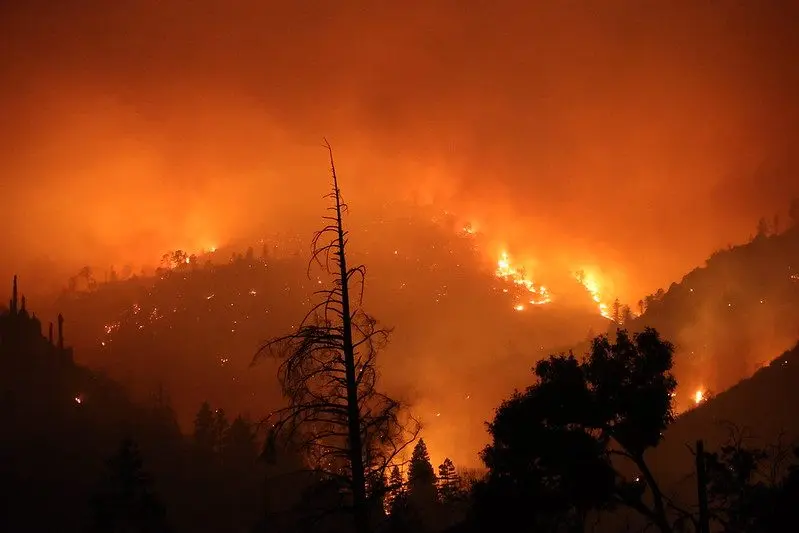
The Pickett Fire, which erupted Aug. 21 near Calistoga, had grown to more than 6,803 acres last week, making it the largest fire faced this year by the Cal Fire Sonoma-Lake-Napa unit.
By Monday, firefighters had contained about 90% of the blaze, which started the afternoon of Aug. 21 at 2343 Pickett Road. In addition to the 2,441 fire personnel on hand to fight the fire, suppression efforts have included 14 helicopters conducting water drops, 75 dozers, 248 engines, 59 crews and 29 water tenders.

A marine layer moved in overnight bringing humidity, Cal Fire officials said, and the fire perimeter has remained mostly within the 2017 Glass Fire footprint. “Large fuels inside the perimeter continue to burn and smolder which will cause visible smoke over the fire area today,” officials said in a Tuesday update. “Firefighters will continue containment efforts and mop up while working in steep, rugged terrain.”
With the fire burning near communities, structure protection remains a high priority. “Firefighters will be actively engaged in protecting homes and other structures, particularly in areas like Aetna Springs Road and Butts Canyon Road, where the fire has been active,” said fire officials.
On Monday, Cal Fire said crews will focus on constructing direct and contingency control lines while mopping up inside existing contained fire lines. “The fire is burning in rugged terrain, and the weather forecast for the next few days includes continued hot and dry conditions, which will make sustained efforts crucial for containment,” officials said.



